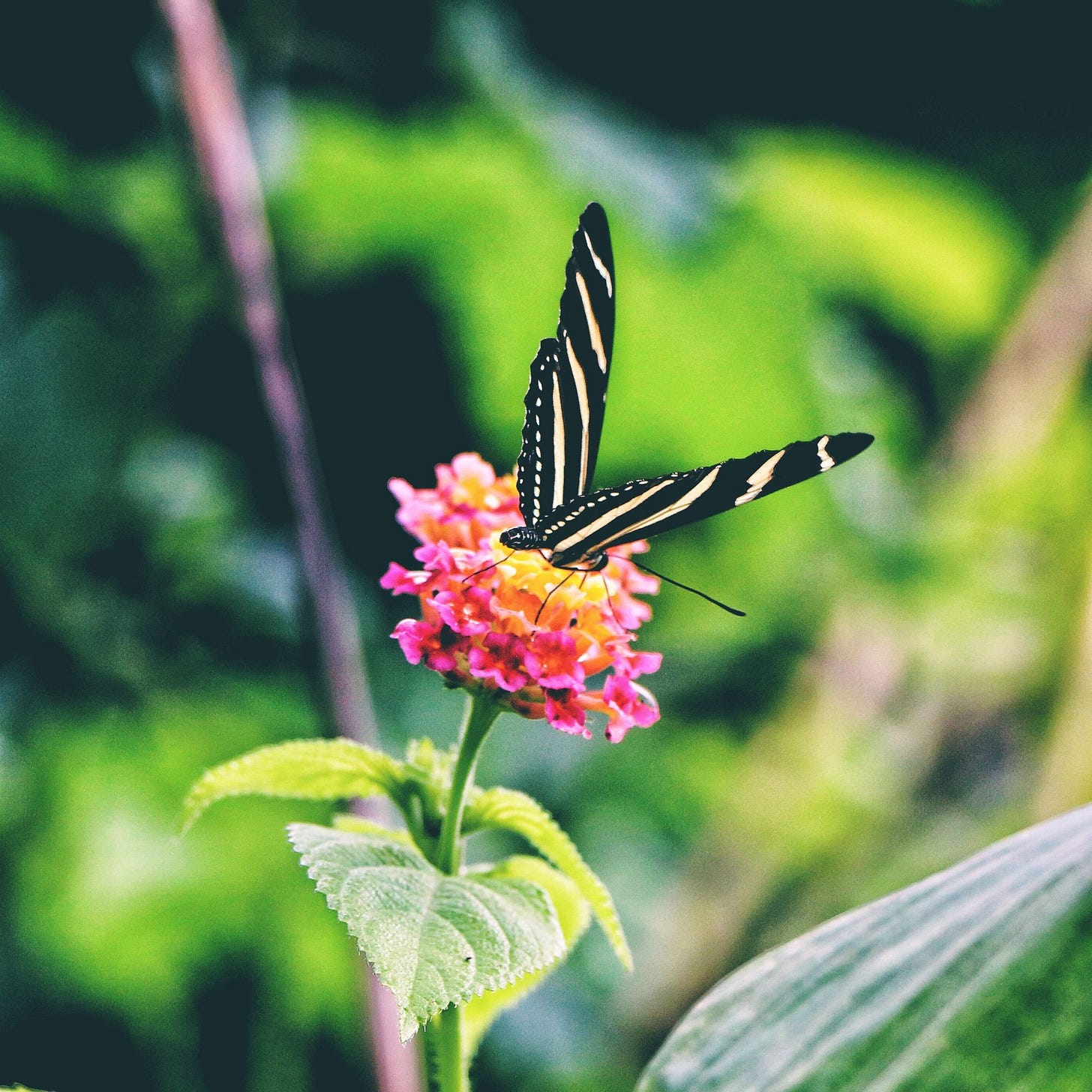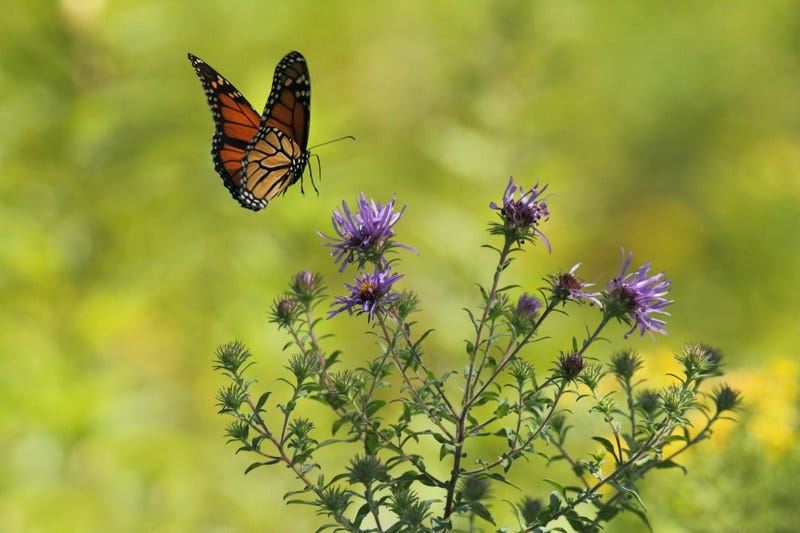Butterflies and flowers seem to be made for each other. The French Poet Ponce Denis Écouchard Lebrun once wrote: “The butterfly is a flying flower, The flower a tethered butterfly.” Besides the beauty they bring to your garden, they play an important part as pollinators. Butterflies feed on the nectar in flowers and pick up pollen that is transferred to other flowers, in a similar manner to bees.
In planning for a butterfly garden, pay attention to their needs. Butterflies need food sources both for their own energy and as host plants for their caterpillars. By providing for both the larval and butterfly stages of life, they can spend their entire life-cycle in your home garden. They also need sun, shelter from wind and a source of water. As such, areas that receive full sun (>6hrs daily) and that are protected from high winds are the best for a butterfly garden site. If you live in a windy area, try planting a row of taller shrubs on the side where the prevailing winds come from.
Water
For water, butterflies like to drink from muddy puddles (this is known as puddling). As well as helping them hydrate, butterflies absorb sodium and minerals from muddy puddles. Simply leaving some sections of soil uncovered near irrigated areas can be enough for that. On hot summer days, a small amount of water can be shared in a bird bath or saucer filled with sand, with submerged rocks the butterflies can use as perches.
Food Sources
The types of flowers butterflies prefer are those that form in clusters to provide a landing platform (e.g. Yarrow, Lantana). Flowers that have warm colors such as Red, Yellow, Orange are very attractive to Butterflies. Fragrance makes no difference as they have a poor sense of smell. Butterflies only feed in daylight, so flowers that are open during the day are also required. Try to plant in drifts of 3-5 plants of the same species, this creates a mass of flowers making it easier for butterflies to find.
For monarch butterflies, they feed only from Milkweed plants (Asclepias spp.) and you should make sure to plant Milkweed that is native to your location. Milkweed is also the host plant for Monarch caterpillars. Most caterpillars have a specific species of plant that they feed from, even if the adults feed from various flowers.

For the selection plants for your butterfly garden, look at native plant guides for your area and you should be able to find a list of plants that are attractive to butterflies. Gardeners in the United States can use this tool to create a list of native plants for a butterfly garden. Butterflies seem to prefer more wild habitats, which can be achieved with a native wildflower or perennial mixed bed garden. When creating your plant list, make sure you select plants that bloom at different times to keep the butterfly garden productive year round. A variation of colors should also be used as some butterflies are more attracted to certain hues than others.

Heat and Shelter
Butterflies need a place to warm up their cold-blooded bodies and will start their day by basking in the sun. Butterflies cannot fly unless the air temperature is at least 16C (60F). A butterfly garden should include a sunny area with flat rocks that is sheltered from the wind. An informal wildflower/native perennial garden could include rocks scattered in the mulch for this purpose. A less formal garden has more of a wild layout, which gives butterflies places to shelter from inclement weather. Well placed shrubs can also provide a safe sheltering place for roosting overnight or hiding from predators. Some guides on butterfly gardens may suggest building little butterfly houses make of stacks of wood with narrow openings. Unfortunately this has proven to be of little benefit as the houses are often colonized by paper wasps or bumblebees.
Overwintering
Butterflies may leaves eggs on plants before winter that will overwinter and hatch in Spring. Some caterpillars will pupate in their cocoons over winter, only emerging once it is warm enough. For these reasons, do not remove/cut back any perennials in winter as you might for a formal landscape, or you could be getting rid of next year's butterflies!

Butterflies are under threat
Butterfly populations are declining all over the world due to loss of habitat and overuse of pesticides. Providing a space in your home garden can help offset this loss in habitat, something that is especially needed in urban areas. You may have heard that the Western Monarch butterfly has had a 99% population decline over the last 20 years. The California population bounced back in 2021, and experts theorize this is due to efforts of gardeners planting more milkweed. This goes to show that what you plant in your garden can make a difference.






